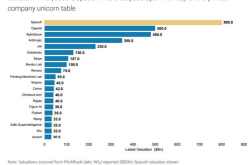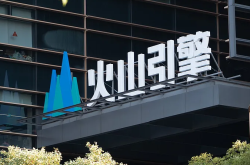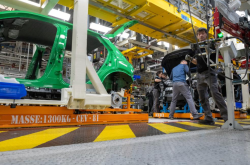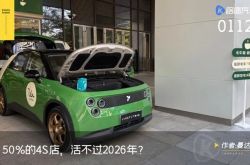Tsinghua University Nurtures Embodied AI Unicorn: Mech-Mind Equips Robots with Vision and Intelligence, Securing Nearly RMB 2 Billion in Funding
![]() 08/04 2025
08/04 2025
![]() 500
500
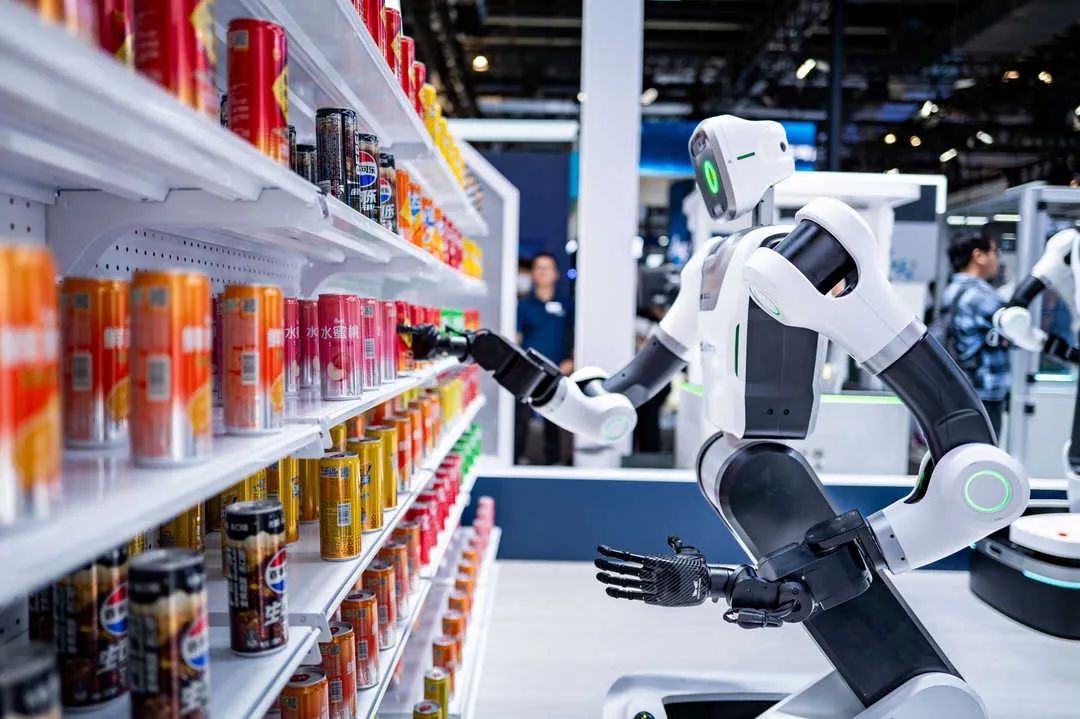
This collaborative column by PencilNews and Great Wall Strategy Consulting uncovers the unicorns of the new era. Great Wall Strategy Consulting stands as a leading new economy consulting firm in China.
Interview | PencilNews | Compiled by Zou Wei | Edited by Zhao Songge, PencilNews
"Recently, I reread the business plan I wrote at the inception of my venture. Our mission remains steadfast: empowering robots with intelligence. Neither the product form nor the business model has shifted since then."
For nine years, Mech-Mind has relentlessly pursued one goal: equipping robots with "eyes" (vision) and "brains" (decision-making).
Mech-Mind, founded in 2016, specializes in providing robots with 3D vision systems, AI brains, and dexterous five-finger hand components.
Founder Shao Tianlan holds a Bachelor's degree in Software Engineering from Tsinghua University and a Master's in Robotics from the Technical University of Munich.
When Shao Tianlan launched Mech-Mind in 2016, the robotics industry was far less popular than it is today, and robotic intelligence was in its infancy. Yet, he foresaw that autonomous driving could foreshadow the future of robots—the fusion of sensing, perception, and planning technologies enabling vehicles to perceive and decide autonomously. Similarly, robots would evolve from human-operated to autonomous perception and decision-making stages. Vision would be pivotal in this transformation.
Thus, Mech-Mind steadfastly focuses on robot vision and intelligence, offering enterprises and system integrators "plug-and-play, versatile" robot vision and decision-making systems. Today, Mech-Mind's clientele spans numerous industries, including electronics, automobiles, machinery, home appliances, food, and logistics.
Since its inception, Mech-Mind has garnered multiple rounds of funding from prestigious investors like IDG Capital, Meituan, Sequoia China, Source Code Capital, Intel Capital, Qiming Venture Partners, and China Growth Capital, amounting to nearly RMB 2 billion.
This year, Mech-Mind aims to deliver over 10,000 robot vision and decision-making systems to clients. With substantial capital influx and leading enterprises entering the robotics industry, where will new opportunities emerge? Read PencilNews' interview with Mech-Mind founder Shao Tianlan.
Disclaimer: The interviewee has confirmed the article's information as true and accurate, and PencilNews vouches for its content.
- 01 - One Product, Multiple Scenarios
PencilNews: While others create complete robot products, you focus on components.
Shao Tianlan: Correct. We initially concentrated on "eyes" and "brains"—vision and decision-making systems. In recent years, as related technologies advanced, we added "hands." In the robot ecosystem, there are end-effectors like robotic arms or mobile chassis, as well as complete system integrations, but we specialize in vision and intelligence. Our clients are primarily end-enterprises and system integrators.
Our products find numerous applications in manufacturing and logistics. In manufacturing, they are used for feeding, handling, cutting, welding, gluing, assembly, palletizing, and measurement. In logistics, they handle cartons, sacks, and turnover boxes. This versatility stems from our cross-industry focus. Neither clients nor suppliers prefer customized development for each scenario; they desire more versatile products.
PencilNews: Clients surely prefer a single product that solves multiple scenario issues.
Shao Tianlan: Exactly. For clients, if each application requires separate design, processing, debugging, training, and maintenance, the system's usage threshold would be prohibitively high. Conversely, a versatile product covering multiple demand points would be more convenient. For us, R&D investment is substantial. If a product serves only one scenario, its cost-effectiveness would be too low.
Our objective is to create standardized products adaptable to multiple scenarios. For instance, our robot vision system exhibits strong versatility in both manufacturing and logistics.
PencilNews: How did you identify "robot intelligence" as an opportunity when you started your business in 2016?
Shao Tianlan: Robots have been around for fifty to sixty years but have always performed preset actions with limited intelligence. We foresee a trend towards autonomous perception and decision-making, akin to autonomous driving. Vision is crucial here. We are essentially giving robot arms the "eyes" and "brains" of autonomous driving.
Vision technology has advanced rapidly in recent years, evolving from security to autonomous driving and medical imaging. We leverage these rapid AI advancements in the robotics industry.
Of course, we're not the only ones who spotted this opportunity. Globally, there are over fifty startups in similar directions, both large and small, but few can actually produce scalable products.
PencilNews: You returned from studying in Germany with limited industry demand-side experience and directly started your business.
Shao Tianlan: Yes, my background is mainly in intelligent robot R&D. However, robots have numerous application scenarios, and no one can fully comprehend all of them. Our current clientele spans numerous industries, including automobile manufacturing, mobile phone manufacturing, food, tobacco and alcohol, and logistics.
Our understanding of scenarios stems from two aspects: First, we have many clients and deep collaborations, providing continuous feedback on their needs. Second, our products are inherently versatile, with a robust software-hardware combination, simplifying decision-making. When encountering a new scenario, we can usually handle it without additional investment, enabling more vertical industry clients to build their systems on our platform.
- 02 - The Path from Application to Mass Production
PencilNews: Since inception, what have been the most significant development milestones?
Shao Tianlan: Let's start with the constants. Our discussions from 2017 and 2018 remain almost identical today. When making strategic decisions, once you make the right choice, it repeats like a tape recorder, albeit with continuous refinement, but the core strategy remains unchanged.
Over these eight and a half years, we've progressed through several stages: initial product development, limited applications, batch deliveries, and now scaling, globalization, and ecosystem development.
The first crucial milestone was around 2020, when our product started gaining practical applications. This phase presented numerous challenges, such as mass production and stability. You can't deploy elite R&D personnel to serve each client; hence, a front-line support system was established.
The second stage began in 2022, with the gradual establishment of a channel system, including a rapid increase in overseas partners.
Behind these stages lies a fundamental issue—responding to client needs. Initially, we sent R&D personnel, then a dedicated front-line technical support team, and later, dealers could handle client needs. Now, many issues are independently resolved by clients themselves. This evolution signifies technological maturity.
Currently, almost 90% of intelligent robot companies globally haven't truly crossed the first hurdle, and only a handful are overcoming the second. We can confidently say we've surpassed both.
PencilNews: All startups face this hurdle when scaling up. Elon Musk has also discussed the challenges of mass production. What was your experience like?
Shao Tianlan: I believe there are two key points. First, a paradigm shift. Initially, we relied on excellent R&D personnel to serve clients on-site, but as we scaled, we couldn't solely rely on our own team. Instead, we had to transfer technical capabilities through training, documentation, and client technical services, enabling channels to utilize them as well.
Second, every link must be upgraded. It's like cooking two dishes at home; it's manageable, but opening a restaurant requires upgrading the stove, firepower, and drainage. For instance, in hardware production, to achieve high-quality mass production capabilities, we've had our own factory since 2020. Before that, production was confined to a single room.
I originally studied computer science, and the primary difference between software and hardware is that once software is debugged, copying it a million times will still be accurate; hardware, however, is different. Just because the first unit works doesn't guarantee the second will. Therefore, we early on complemented our hardware mass production capabilities, establishing a comprehensive system from supply chain to quality inspection and process.
These process flows ensure product consistency post-mass production. For example, slight lens differences can affect camera performance. High-quality products exhibit high consistency, akin to dropping two new iPhones and being unable to tell them apart.
Our products demand precision opto-mechatronics, necessitating rigorous stability and consistency. We've invested significantly in this aspect, including processes, tooling, and procedures.
Similarly, at the software algorithm level, we face diverse scenarios where the same algorithm may perform vastly differently. Much of this is polished on-site. To date, many of our devices can be immediately used on-site with good results, but they've also undergone numerous iterations.
At least half of our products are polished on-site with clients rather than developed entirely in the lab. This is akin to autonomous driving; before a car leaves the factory, it can only solve some problems, and real-world scenarios present various challenges.
We've also encountered numerous odd issues. For instance, a client called saying the camera wasn't working properly. When we arrived, we found a large spider on the lens. You can't blame the spider, so we had to consider solutions: hardware must have adequate protection, lenses must withstand cleaning with brushes, brooms, or even water, and there must be self-monitoring functions for abnormal imaging.
Our challenge lies in the extreme diversity of scenarios. While autonomous driving needs data collection for R&D and can run on roads anytime, industrial manufacturing differs; each client's application scenario is unique and scattered.
PencilNews: You're delivering over 10,000 units this year. Is the pressure high?
Shao Tianlan: It's manageable for us. Our business is relatively mature, and our product's mass production is supported by a robust system. Over the past few years, we've invested heavily in R&D, production, supply chain, channels, and services.
This year's mass production of tens of thousands of units is a solid achievement for us, and our overall efficiency is continuously improving. Our sales volume is rapidly increasing, but our team size and expenses remain largely unchanged, indicating constant internal efficiency optimization. We've also introduced automation equipment and expanded our production space. Therefore, the pressure for this year's task isn't high. These are the results we've accumulated since 2020.
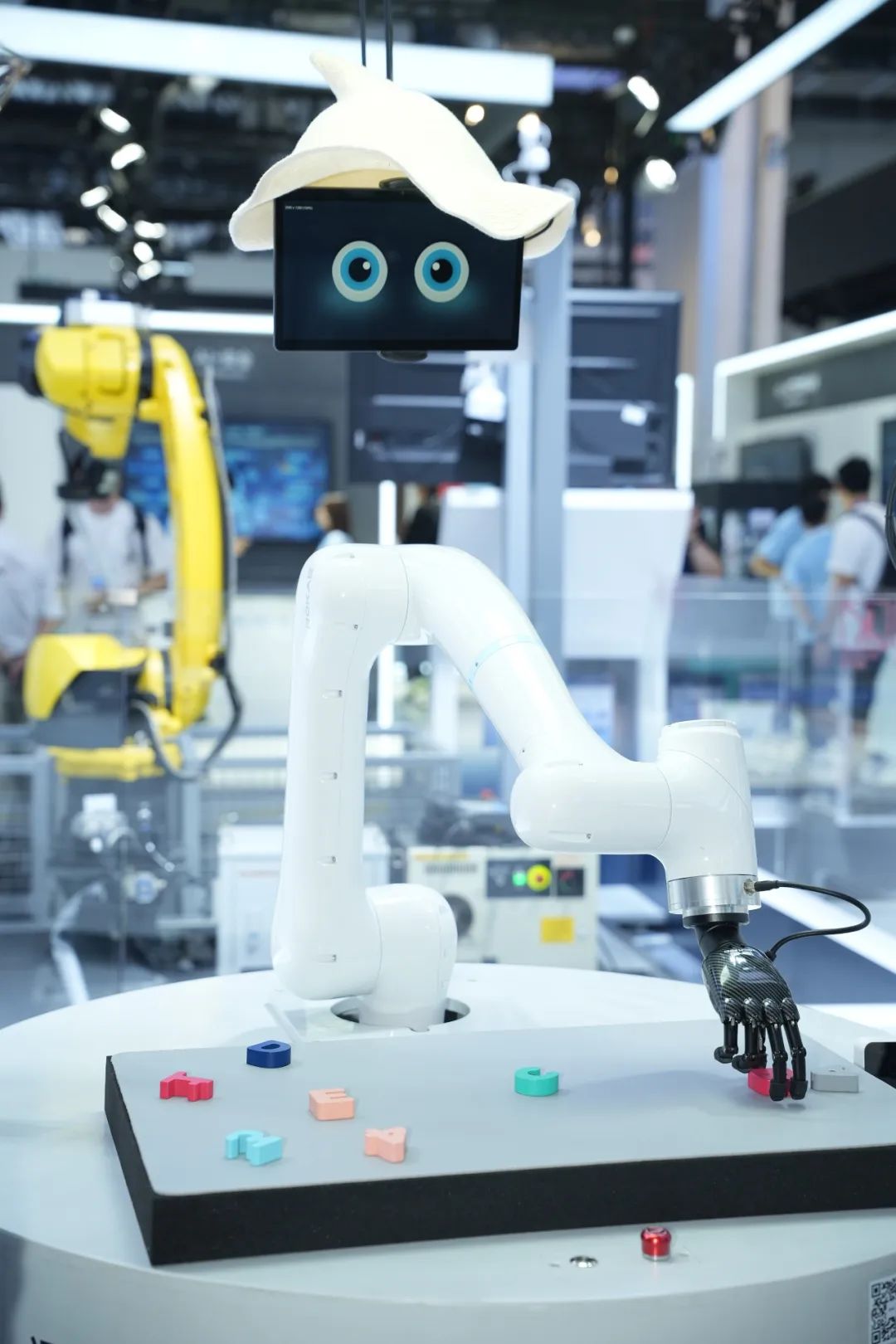
Mech-Mind's Universal Embodied Intelligence Eye-Brain-Hand Robot
PencilNews: During mass production, which stage was the most challenging? Was it when you produced hundreds or thousands of units?
Shao Tianlan: I'd say it was hardest when we first entered the thousand-unit stage. Revenue wasn't sufficient to support a complete and efficient team and production system, yet the volume was too large for just a few people to handle.
Suppliers didn't take us seriously enough to allocate their best resources, but we weren't the type of client who could just take and go. It was an awkward middle ground. At that time, we rebuilt our entire supply chain, set up a new factory, and improved the full process, including equipment, SOPs, and quality inspection procedures. Building a new factory amidst the pandemic made it particularly challenging.
- 03 - Like Doing Autonomous Driving in Robotics
PencilNews: Why are you so determined to focus solely on "eyes" and "brains"?
Shao Tianlan: We have several stable points. While technical solutions are constantly upgraded, the model structures, parameters, and algorithms evolve. However, our product form remains unchanged—"sensors + software + hands now."
The second stability lies in our business model—standardized products + service system, serving end-clients through dealers. Third, we don't do system integration but rather standardized products for a wide range of industries, with an international focus.
This relates directly to the industry structure in which we operate. We find ourselves in a sector characterized by rational demand and decision-making. Customer needs are distinctly clear, encompassing efficiency, stability, ease of use, deployment cycles, and overall cost. These dimensions can be meticulously analyzed and measured.
While our technology is novel, the industries we've ventured into are well-established. This includes end-customers in manufacturing and logistics, as well as robots, Programmable Logic Controllers (PLCs), and system integrators. These industrial chains and business ecosystems have been in place for a considerable time. We haven't altered this ecosystem but rather integrated as a "new type of technology." For instance, this industry previously comprised hydraulic, pneumatic, electronic control, and display screen components, and we've simply added the category of artificial intelligence vision. System integrators and end-customers remain unchanged, but we assist them in addressing novel application scenarios.
PencilNews: Looking ahead to 2025, what new opportunities do you foresee for robots' "eyes, hands, and brains"?
Shao Tianlan: There are two notable transformations occurring today. The first is the quantum leap in artificial intelligence technology. When we first embarked on this journey, face recognition was still deemed cutting-edge. Nowadays, face recognition is ubiquitous in daily life, whether shopping or entering the subway.
Furthermore, today's model capabilities have entered the era of nearly trillion parameters. These technological advancements instill confidence that many previously unsolvable problems now at least offer a glimmer of hope. For example, our robots already possess a certain level of commonsense reasoning ability. If I say, "I need to hammer a nail," it can recognize, "Oh, I have a hammer." If it rains, it knows to hand me an umbrella. These abilities are inextricably linked to the language understanding capabilities conferred by large models.
Additionally, there have been advancements in reinforcement learning. For instance, the grasping tasks we demonstrate are now swift and precise, which was unattainable a few years ago.
The second transformation is the heightened attention from industry giants. This "giant" encompasses both large companies and significant funds. For startups, this presents both an opportunity and a challenge.
The opportunity lies in the fact that you no longer need to educate each customer individually on "what is an intelligent robot." Today, many customers are already well-informed by large factories and understand the capabilities of these technologies. However, the challenge is that you must perform better and tailor your offerings more meticulously to customer needs than the large factories. This places considerable pressure on startups.
PencilNews: The downstream demand for "eyes, hands, and brains" components is growing stronger.
Shao Tianlan: Absolutely, it will increase. However, there are also aspects that startups like us cannot initially undertake, such as market education. Consider how autonomous driving gained traction; it wasn't due to a startup but rather giants like Google investing billions of dollars, suddenly making everyone realize the industry's potential.
The same applies to our industry. The entry of many giants is a positive development for us. They help educate customers, but this also raises customer expectations and heightens technical requirements. This means we must continuously iterate our technology to meet their needs.
Nevertheless, the industry is indeed much more vibrant now compared to the past. For instance, the robot dance during the Spring Festival Gala was a national sensation that everyone talked about.
PencilNews: What were your feelings when you witnessed the Unitree robots perform?
Shao Tianlan: I thought the program was fantastic. I've seen robot interactions on other stages before, but this time the robots were more agile, and the design of them twirling handkerchiefs was particularly impressive. Secondly, Director Zhang Yimou's choreography was outstanding, seamlessly blending aesthetics with human-robot collaboration. Dressing the robots in traditional costumes and integrating them into human dances, this aesthetic concept of "human-robot dance" made the program even more remarkable.
It can be said that this is a universal technology popularization. There will be follow-up activities such as robot marathons, drawing attention from outside the industry to robots, attracting funds and talent, which is beneficial for the industry.
The next three paths are becoming increasingly clear: large enterprises, scientific research and education systems, and us, the startups. We're fortunate to have garnered sufficient resources and attention over the years, and the next step is to "achieve our respective goals."
The current development stage of the robotics industry is akin to that of autonomous driving. Capital and talent are pouring in intensively. But this is not the end; it's merely the beginning. The autonomous driving companies that have thrived later all possess feasible technologies and business models. You can't rely on "miracles" but must solidly develop product forms and business models.
Pencil Road: If compared to autonomous driving, are you akin to Horizon Robotics, engaging in both algorithms and core components?
Shao Tianlan: Horizon Robotics is an exemplary company with an outstanding team. We possess algorithmic capabilities, core components, and can seamlessly integrate with robot systems to create comprehensive solutions. Just as Horizon's chips + software can cooperate with cars, we also have components + algorithms + integration capabilities, ultimately delivering value.
- 04 - Entrepreneurship Should Begin in the Non-Consensus Stage
Pencil Road: How did early investors perceive you?
Shao Tianlan: Even before the trend took off, a few professional investors had already taken notice. They specialize in studying industrial robots, automation, logistics, automobiles, and other industries. When they saw that our products could solve real problems, they were willing to invest. Especially in the early stages, when business and financial indicators hadn't yet taken off, investors focused more on whether your technology had a future. However, the difference between whether that future is 3, 5, 10, or 20 years away is substantial. If you say it will take off in 20 years, they might not be able to wait.
They value whether you've already met the needs of some customers, whether you have customer validation, test results, repurchase data, etc. Our early customers might have repurchased twice, but now many customers have repurchased hundreds or even thousands of times.
Pencil Road: Did you initiate this venture in a non-consensus state?
Shao Tianlan: Yes. In fact, I believe startups must operate this way. I enjoy reading many books about entrepreneurial stories, such as Mr. Wu Xiaobo's "Turbulent Thirty Years" and numerous entrepreneur biographies, including Musk's story.
Almost all genuine startups commence their actions before a consensus is formed. They must rush ahead and enter before the trend is widely recognized.
Pencil Road: But this stage must be quite lonely.
Shao Tianlan: It can be lonely, but it's also incredibly fulfilling. For instance, in 2017, 2018, and 2019, although our business scale was still relatively small, and industry attention wasn't high, the pressure wasn't actually that great. We explored steadily and conducted various experiments.
Many newly established robot companies today are different. If it's a new company amidst today's industry heat, with technology not yet mature, products not yet produced, and commercialization still in its nascent stages, it might face considerable pressure. The company's development needs to keep pace with industry attention and everyone's expectations.
So, we enjoyed a period "outside the spotlight," which was invaluable. It allowed us to calm down and gradually refine our technology, products, business models, and team. If we faced fierce competition from the outset, it would have been difficult, truly difficult. Some things can't be rushed; taking it slow is faster.
You see, many outstanding companies like Tesla and Xiaomi actually faced significant non-consensus and challenges in their early stages. But it was during that stage that they were able to focus on accumulation. I believe this is the most crucial growth period for a company.
The real pressure actually manifests now—to mass-produce, scale up, frequently engage with the market, enter the mainstream market and the real commercial world. That's when the pressure truly intensifies.

